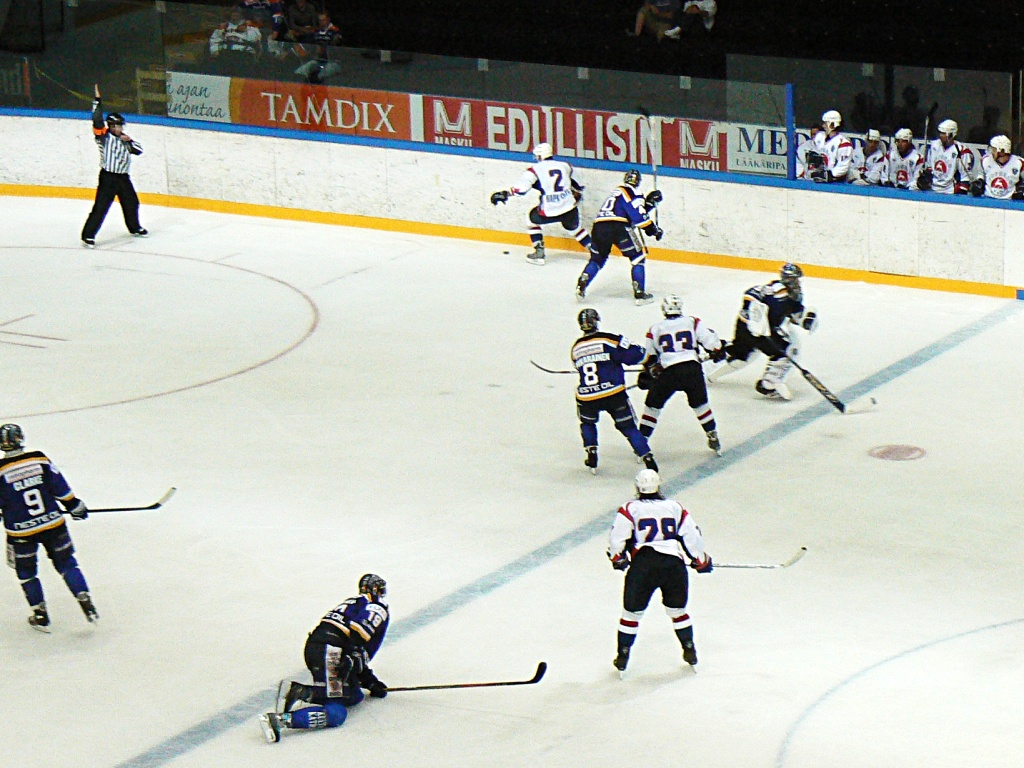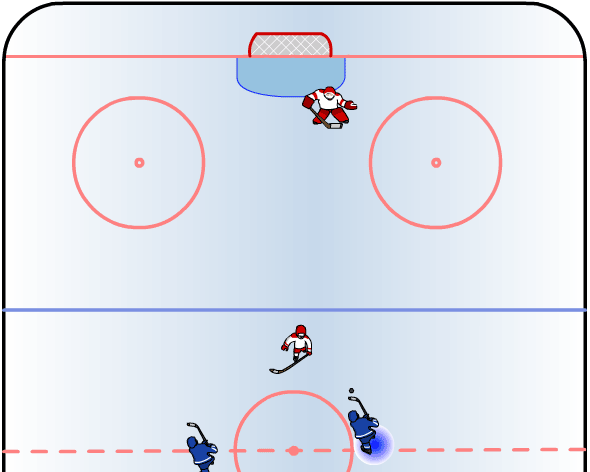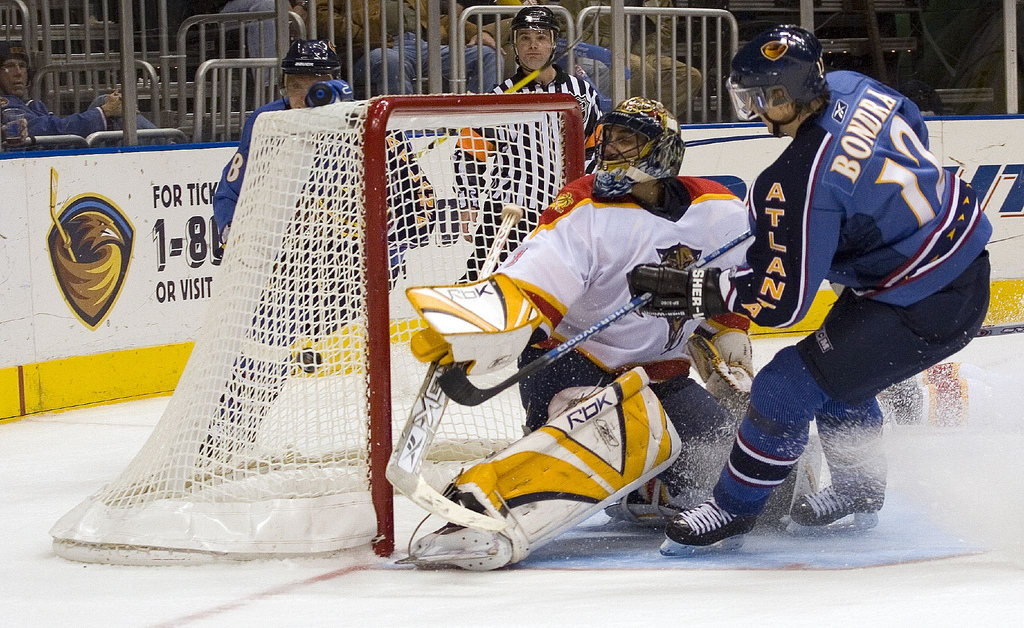|
Garry Unger
Garry Douglas Unger (born December 7, 1947) is a former professional ice hockey centre who played 16 seasons in the National Hockey League from 1967 until 1983. Playing career Unger set an NHL record by playing 914 consecutive games in the regular season between February 24, 1968, and December 21, 1979, doing so with four teams: the Toronto Maple Leafs, Detroit Red Wings, St. Louis Blues and Atlanta Flames. Unger passed Andy Hebenton, who had the record of 630 consecutive games played that had stood since the 1963-64 NHL season. Unger's streak came to an end after Flames' coach Al MacNeil benched him on December 21, 1979 (the only game he would miss that season). His record has since been surpassed by Phil Kessel who has played over 1000 consecutive games as of 2022 Unger finished his career with 1105 career NHL games, scoring 413 goals and 391 assists for 804 points, and he also registered 1075 career penalty minutes. Unger was the MVP of the 1974 NHL All-Star Game played in ... [...More Info...] [...Related Items...] OR: [Wikipedia] [Google] [Baidu] |
Centre (ice Hockey)
The centre (or center in the United States) in ice hockey is a forward (hockey), forward position of a player whose primary Hockey rink#Zones, zone of play is the middle of the ice, away from the sideboards. Centres have more flexibility in their positioning and therefore often end up covering more ice surface than any other player. Centres are ideally strong, fast skaters who are able to Checking (ice hockey), back-check quickly from deep in the opposing zone. Generally, centres are expected to be gifted passers more so than goal scorers, although there are exceptions - typically larger centres who position themselves directly in front of the net in order to score off rebounds. They are also expected to have exceptional "ice vision", intelligence, and creativity. They also generally are the most defensively-oriented forwards on the ice, as they are expected to play the role of the third player in defense, after the defenceman, defencemen. Centres usually play as part of a line ( ... [...More Info...] [...Related Items...] OR: [Wikipedia] [Google] [Baidu] |
Alberta Junior Hockey League
The Alberta Junior Hockey League (AJHL) is an Alberta-based Junior A ice hockey league that belongs to the Canadian Junior Hockey League (CJHL). It was formed as a five-team league in 1964. There are currently 16 teams in the league. The regular season league champions receive the Dave Duchak Trophy. The playoff champions receive the Inter Pipeline Cup (previously known as the Carling O'Keefe trophy and Gas Drive Cup). The winner of the AJHL playoffs continues on to play in the Doyle Cup series, which determines the Pacific region berth in the national Junior A championship, the Centennial Cup. History The early 1960s saw a much different junior hockey scene in Alberta than what currently exists. The Edmonton Oil Kings were the only true Junior-A-calibre team in the province and drew most of the top talent Alberta had to offer. The Oil Kings were the Western Canadian champions from 1962 until 1966, Abbott Cup champions in 1954 and from 1960 to 1966, and Memorial Cup natio ... [...More Info...] [...Related Items...] OR: [Wikipedia] [Google] [Baidu] |
Calgary Buffaloes (AJHL)
The Calgary Buffaloes were a Junior A ice hockey team in the Alberta Junior Hockey League based out of Calgary, Alberta. They were one of the five founding members of the AJHL in 1963. The Buffaloes captured the AJHL title each of their first three seasons, earning the right to face the Edmonton Oil Kings for the right to play for the Memorial Cup. All three seasons, the Buffaloes were defeated by the powerful Oil Kings. In 1965, the cross-town Calgary Cowboys withdrew from the AJHL with most of their players moving to the Buffaloes. Prior to the 1966–67 season, the Buffaloes renamed themselves the Cowboys, as a new Western Canada Junior Hockey League team took over the Buffaloes name. The team would retain the Cowboys moniker until it folded midway through the 1969–70 season. Season-by-season Record ''Note: GP = Games played, W = Wins, L = Losses, T = Ties, Pts = Points, GF = Goals for, GA = Goals against'' :1No regular season was played in 1963–64, League had a pla ... [...More Info...] [...Related Items...] OR: [Wikipedia] [Google] [Baidu] |
Penalty (ice Hockey)
A penalty in ice hockey is a punishment for an infringement of the rules. Most penalties are enforced by sending the offending player to a penalty box for a set number of minutes. During the penalty the player may not participate in play. Penalties are called and enforced by the referee, or in some cases, the linesman. The offending team may not replace the player on the ice (although there are some exceptions, such as fighting), leaving them short-handed as opposed to full strength. When the opposing team is said to be on a ''power play'', they will have one more player on the ice than the short-handed team. The short-handed team is said to be "on the penalty kill" until the penalty expires and the penalized player returns to play. While standards vary somewhat between leagues, most leagues recognize several common varieties of penalties, as well as common infractions. The statistic used to track penalties is called "penalty minutes" and abbreviated to "PIM" (spoken as single w ... [...More Info...] [...Related Items...] OR: [Wikipedia] [Google] [Baidu] |
Point (ice Hockey)
In ice hockey, point has three contemporary meanings. Personal stat A point is awarded to a player for each goal scored or assist earned. The total number of goals plus assists equals total points. The Art Ross Trophy is awarded to the National Hockey League (NHL) player who leads the league in scoring points at the end of the regular season. Team stat Points are also awarded to assess standings (or rankings). Historically, teams were awarded two points for each win, one point for each tie and no points for a loss. Such a ranking system, implemented primarily to ensure a tie counted as a "half-win" for each team in the standings, is generally regarded as British and/or European in origin and as such adopted by the National Hockey League which was founded in Canada where leagues generally used ranking systems of British origin. Awarding points in the standings contrasts with traditional American ranking systems favored in sports originating within the United States where today the m ... [...More Info...] [...Related Items...] OR: [Wikipedia] [Google] [Baidu] |
Assist (ice Hockey)
In ice hockey, an assist is attributed to up to two players of the scoring team who shot, passed or deflected the puck towards the scoring teammate, or touched it in any other way which enabled the goal, meaning that they were "assisting" in the goal. There can be a maximum of two assists per goal. The assists will be awarded in the order of play, with the last player to pass the puck to the goal scorer getting the primary assist and the player who passed it to the primary assister getting the secondary assist. Players who gain an assist will get one point added to their player statistics. Despite the use of the terms "primary assist" and "secondary assist", neither is worth more than the other, and neither is worth more or less than a goal. Assists and goals are added together on a player's scoresheet to display that player's total points. Special cases If a player scores off a rebound given up by a goaltender, assists are still awarded, as long as there is no re-possession by t ... [...More Info...] [...Related Items...] OR: [Wikipedia] [Google] [Baidu] |
Goal (ice Hockey)
In ice hockey, a goal is scored when the puck entirely crosses the goal line between the two goal posts and below the goal crossbar. A goal awards one point to the team attacking the goal scored upon, regardless of which team the player who actually deflected the puck into the goal belongs to (see also own goal). Typically, a player on the team attempting to score shoots the puck with their stick towards the goal net opening, and a player on the opposing team called a goaltender tries to block the shot to prevent a goal from being scored against their team. The term goal may also refer to the structure in which goals are scored. The ice hockey goal is rectangular in shape; the front frame of the goal is made of steel tube painted red (blue in the ECHL because of a sponsorship deal with GEICO) and consists of two vertical goalposts and a horizontal crossbar. A net is attached to the back of the frame to catch pucks that enter the goal and also to prevent pucks from entering it ... [...More Info...] [...Related Items...] OR: [Wikipedia] [Google] [Baidu] |
Season (sports)
In an organized sports league, a typical season is the portion of one year in which regulated games of the sport are in session: for example, in Major League Baseball the season lasts approximately from the last week of March to the last week of September. In other team sports, like association football or basketball, it is generally from August or September to May although in some countries - such as Northern Europe or East Asia - the season starts in the spring and finishes in autumn, mainly due to weather conditions encountered during the winter. A year can often be broken up into several distinct sections (sometimes themselves called seasons). These are: a preseason, a series of exhibition games played for training purposes; a regular season, the main period of the league's competition; the postseason, a playoff tournament played against the league's top teams to determine the league's champion; and the offseason, the time when there is no official competition. Preseason In ... [...More Info...] [...Related Items...] OR: [Wikipedia] [Google] [Baidu] |
Playoffs
The playoffs, play-offs, postseason or finals of a sports league are a competition played after the regular season by the top competitors to determine the league champion or a similar accolade. Depending on the league, the playoffs may be either a single game, a series of games, or a tournament, and may use a single-elimination system or one of several other different playoff formats. Playoff, in regard to international fixtures, is to qualify or progress to the next round of a competition or tournament. In team sports in the U.S. and Canada, the vast distances and consequent burdens on cross-country travel have led to regional divisions of teams. Generally, during the regular season, teams play more games in their division than outside it, but the league's best teams might not play against each other in the regular season. Therefore, in the postseason a playoff series is organized. Any group-winning team is eligible to participate, and as playoffs became more popular they were ... [...More Info...] [...Related Items...] OR: [Wikipedia] [Google] [Baidu] |
Regular Season
In an organized sports league, a typical season is the portion of one year in which regulated games of the sport are in session: for example, in Major League Baseball the season lasts approximately from the last week of March to the last week of September. In other team sports, like association football or basketball, it is generally from August or September to May although in some countries - such as Northern Europe or East Asia - the season starts in the spring and finishes in autumn, mainly due to weather conditions encountered during the winter. A year can often be broken up into several distinct sections (sometimes themselves called seasons). These are: a preseason, a series of exhibition games played for training purposes; a regular season, the main period of the league's competition; the postseason, a playoff tournament played against the league's top teams to determine the league's champion; and the offseason, the time when there is no official competition. Preseason In ... [...More Info...] [...Related Items...] OR: [Wikipedia] [Google] [Baidu] |
Paul Henderson
Paul Garnet Henderson, (born January 28, 1943) is a Canadian former professional ice hockey player. A left winger, Henderson played 13 seasons in the National Hockey League (NHL) for the Detroit Red Wings, Toronto Maple Leafs and Atlanta Flames and five in the World Hockey Association (WHA) for the Toronto Toros and Birmingham Bulls. He played over 1,000 games between the two major leagues, scoring 376 goals and 758 points. Henderson played in two NHL All-Star Games and was a member of the 1962 Memorial Cup-winning Hamilton Red Wings team as a junior. Henderson is best known for playing for Team Canada in the 1972 Summit Series against the Soviet Union. Played during the Cold War, the series was viewed as a battle for both hockey and cultural supremacy. Henderson scored the game-winning goal in the sixth, seventh and eighth games, the last of which has become legendary in Canada and made him a national hero: it was voted the "sports moment of the century" by The Canadian Pre ... [...More Info...] [...Related Items...] OR: [Wikipedia] [Google] [Baidu] |
.jpg)



